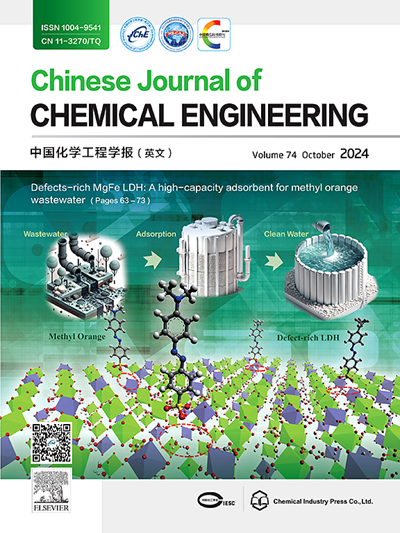Research progress on the copper-based catalyst design for dimethyl oxalate hydrogenation to ethylene glycol
IF 3.7
3区 工程技术
Q2 ENGINEERING, CHEMICAL
引用次数: 0
Abstract
In this paper, the research progress of Cu-based catalyst and the activity enhancement strategies in the hydrogenation of dimethyl oxalate (DMO) to ethylene glycol (EG) was reviewed. As a green and economical ethylene glycol production path, the core of DMO hydrogenation of EG lies in the rational design and optimization of catalysts. This paper first introduces the background of the DMO hydrogenation system EG significance and the important effect of Cu-based catalyst in the reaction, particularly emphasizing the coordination with the Cu+−Cu0 species catalytic effect. Then, many factors affecting the activity of Cu-based catalysts were analyzed in detail, including the equilibrium effect between Cu0 and Cu+ species, the surface dispersion of Cu species, the interaction between metal and support, and the morphology effect of the catalyst. Regarding strategies for improving catalyst performance, this paper summarized effective measures such as optimizing support structure, adding promoters and optimizing preparation methods, and demonstrated the practical application effects of these strategies through representative catalyst examples. In addition, this paper also discusses the complex relationship between the influencing factors and catalyst performance. It points out the key directions for future research, with in-depth exploration of the correlation between catalyst structure and performance, the development of new catalysts, and the application of machine learning and big data technology in the catalyst research and development. In summary, this paper provides comprehensive theoretical guidance and practical reference for the performance optimization of Cu-based catalysts for DMO hydrogenation to EG.

草酸二甲酯加氢制乙二醇铜基催化剂设计研究进展
本文综述了cu基催化剂在草酸二甲酯(DMO)加氢制乙二醇(EG)反应中的研究进展及活性增强策略。作为一种绿色经济的乙二醇生产途径,DMO加氢EG的核心在于催化剂的合理设计和优化。本文首先介绍了DMO加氢体系的背景EG的意义以及Cu基催化剂在反应中的重要作用,特别强调了与Cu+−Cu0配位的催化作用。然后,详细分析了影响Cu基催化剂活性的诸多因素,包括Cu0和Cu+之间的平衡效应、Cu物种的表面分散、金属与载体的相互作用以及催化剂的形态效应。对于提高催化剂性能的策略,本文总结了优化支撑结构、添加促进剂、优化制备方法等有效措施,并通过具有代表性的催化剂实例,论证了这些策略的实际应用效果。此外,本文还讨论了影响因素与催化剂性能之间的复杂关系。指出了未来研究的重点方向,深入探索催化剂结构与性能的相关性,开发新型催化剂,以及机器学习和大数据技术在催化剂研发中的应用。综上所述,本文为cu基催化剂DMO加氢制EG的性能优化提供了全面的理论指导和实践参考。
本文章由计算机程序翻译,如有差异,请以英文原文为准。
求助全文
约1分钟内获得全文
求助全文
来源期刊

Chinese Journal of Chemical Engineering
工程技术-工程:化工
CiteScore
6.60
自引率
5.30%
发文量
4309
审稿时长
31 days
期刊介绍:
The Chinese Journal of Chemical Engineering (Monthly, started in 1982) is the official journal of the Chemical Industry and Engineering Society of China and published by the Chemical Industry Press Co. Ltd. The aim of the journal is to develop the international exchange of scientific and technical information in the field of chemical engineering. It publishes original research papers that cover the major advancements and achievements in chemical engineering in China as well as some articles from overseas contributors.
The topics of journal include chemical engineering, chemical technology, biochemical engineering, energy and environmental engineering and other relevant fields. Papers are published on the basis of their relevance to theoretical research, practical application or potential uses in the industry as Research Papers, Communications, Reviews and Perspectives. Prominent domestic and overseas chemical experts and scholars have been invited to form an International Advisory Board and the Editorial Committee. It enjoys recognition among Chinese academia and industry as a reliable source of information of what is going on in chemical engineering research, both domestic and abroad.
 求助内容:
求助内容: 应助结果提醒方式:
应助结果提醒方式:


